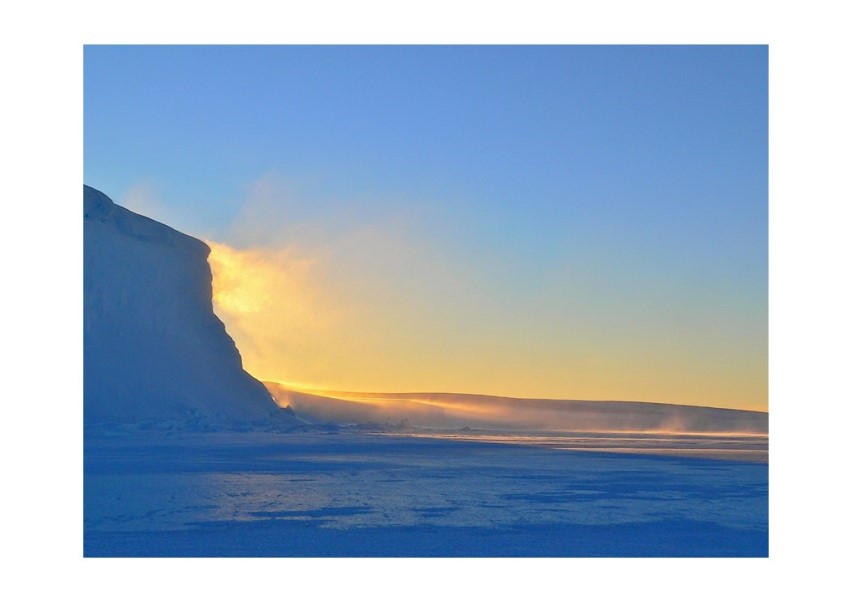
The Desertification Research Center (CSIC-UV-GVA) leads an analysis of how atmospheric and oceanic circulation affects wind in the northern Antarctic Peninsula between 1979 and 2022.
Positive trends dominate throughout the period, although with great variability between years and observatories. Wind data from the CSIC Juan Carlos I Base are analyzed for the first time.
Changes in surface wind speed impact precipitation, the amount and stability of sea ice, the Antarctic Circumpolar Current and the formation of deep water.
The wind speed on the surface of the northern Antarctic Peninsula is decreasing since 2001. This is shown by the analysis of multiple data recorded during the period 1979-2022 led by a team from the Desertification Research Center (CIDE) of the Spanish National Research Council (CSIC), the University of Valencia (UV) and the Generalitat Valenciana. Despite the observed variability, the trend towards an increase in surface wind speed has given way to a period where wind speed has been decreasing since 2001, according to the study published in the journal Atmospheric Research. The work analyzes the influence of phenomena such as El Niño or the Annular Mode on the wind, whose variations can affect the region's climate.
The work is based on data recorded in the area and climate simulations from the ECMWF / Copernicus Climate Change Service ERA5 reanalysis. As the conditions in Antarctica are so adverse, the team of the Climate, Atmosphere and Ocean Laboratory (Climatoc-Lab) of the CIDE performed a quality control and homogenization of the recorded data series. In addition, they analyzed for the first time the surface wind speed data from the Spanish Antarctic Base Juan Carlos I of the CSIC.
“When we analyze the whole period of observational data we detect how positive trends dominate, although they present great variability between years and between observatories,” explains Miguel Andrés Martín, researcher at CIDE and lead author of the study. “However, after an analysis of the variability by decades we see that since 2001 the positive trends have given way to a period where the wind speed is decreasing,” he reveals.
The scientists studied the atmospheric circulation patterns with the greatest influence on wind speed in the region: the Southern Annular Mode (SAM) and the El Niño-Southern Oscillation (ENSO). The Southern Annular Mode defines whether the belt of powerful winds surrounding Antarctica is more or less close. “Previous studies show that the SAM has a positive trend and that wind belt is getting closer and closer to the Antarctic Peninsula, so it is to be expected that the trend in surface wind speed will be positive,” describes the CIDE researcher. Then, why do negative trends in surface wind speed appear in the last two decades?
Variables affecting wind
The answer they find is that the influence of this phenomenon on surface wind speed varies according to the selected study period. “In winters between 2009 and 2013 the relationship is direct, while no significant relationship is observed between 2014 and 2020. This non-stationarity has already been described for other variables such as temperature and precipitation in the Antarctic, but not for wind,” says César Azorín, director of the Climatoc-Lab at CIDE. El Niño plays a secondary role in the control of winds in the Antarctic Peninsula, affecting only the west side of the peninsula due to the relationship between La Niña, its opposite, and the Amundsen Sea Low.
“Many other variables can play a role in the results of wind trends,” says Azorín, one of the authors of the paper. “The Antarctic Peninsula is a very complex region, where the abrupt orography makes local processes play a fundamental role. The surface wind speed could also be influenced by spatial changes in the structure of the MAR, changes in atmospheric stability, the connection with ENSO, anthropogenic forcings and concentration of greenhouse gases or stratospheric ozone, among other factors,” he points out.
Effects on Antartic climate
Surface wind speed is a less studied climate variable compared to temperature or precipitation, but it has important implications, researchers say. Recent temperature records in northeast Antarctica are associated with wind, whose increase increases the Foehn effect (air rises on the windward side of mountains, cooling and generating precipitation, and descends on the opposite side as warm, dry air). Associated with this process there is also a melting of the Larsen ice shelves.
Thus, variations in surface wind speed in the region may also have an impact on precipitation on the west side of the peninsula, on the amount and stability of sea ice, on the Antarctic Circumpolar Current or on the formation of deep waters in the Antarctic, they point out. In addition to CIDE, research staff from the Pyrenean Institute of Ecology (IPE-CSIC), the Complutense University of Madrid (UCM) and the State Meteorological Agency (AEMET) are participating in the study.
The study is funded by the Ministry of Science, Innovation and Universities, the Generalitat Valenciana, the Generalitat de Catalunya, the BBVA Foundation and the Plataforma Temática Interdisciplinar Clima del CSIC (PTI+ CLIMA). The collaboration of the different stations in the Antarctic, in particular the members of AEMET Antarctica and Manuel Bañón, responsible for many years of the meteorological station of the BAE Juan Carlos I of the CSIC, should also be highlighted.
Reference:
Miguel Andres-Martin, Cesar Azorin-Molina, Encarna Serrano, Sergi González-Herrero, Jose A. Guijarro, Shalenys Bedoya-Valestt, Eduardo Utrabo-Carazo, Sergio M. Vicente Serrano, Near-surface wind speed trends and variability over the Antarctic Peninsula, 1979–2022, Atmospheric Research, Volume 309, 2024, 107568, ISSN 0169-8095. DOI: https://doi.org/10.1016/j.atmosres.2024.107568
CIDE Communication









